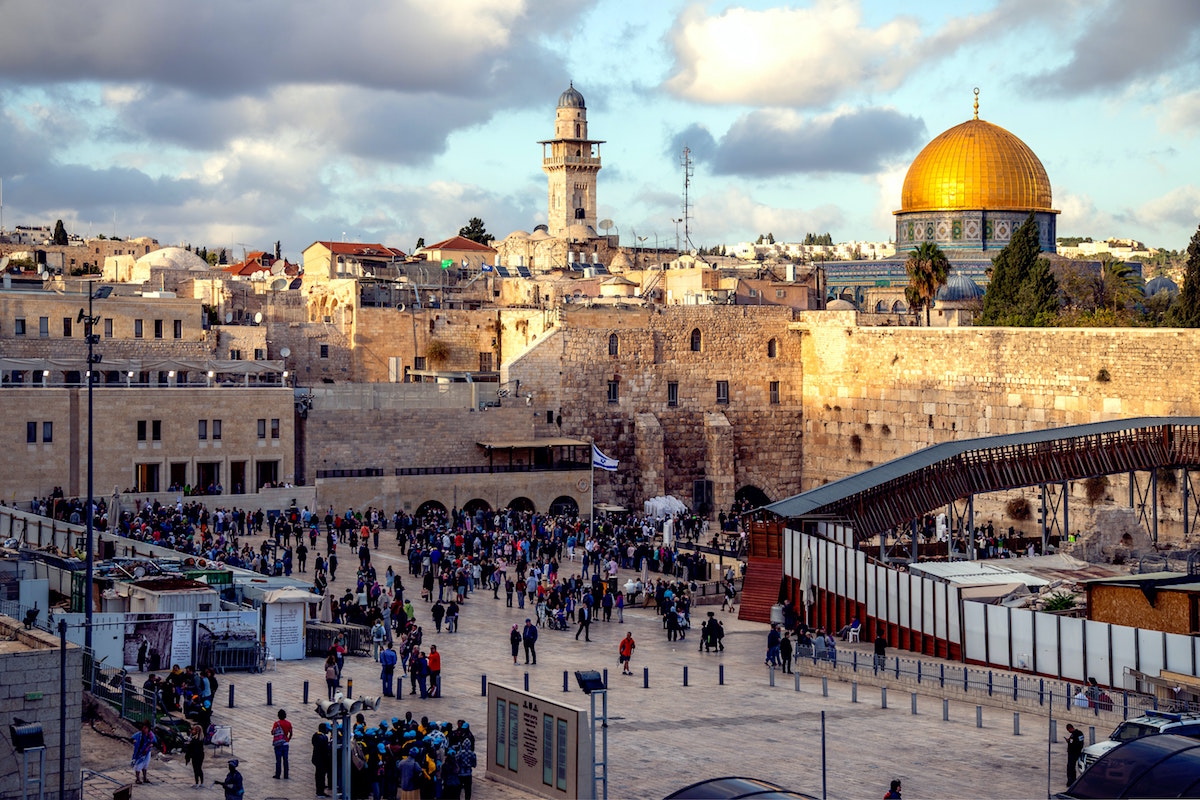Jerusalem is the most important and influential city in human history…
With an ancient past that can be traced back as far as the 4th millennium BC. It is also the Word’s most fought-over city, captured and recaptured no less than 44 times, and bitterly contested by the European knights of the crusades to blue-suited politicians this present day. A global religious epicentre, it possesses enormous historical significance within the World’s three Monotheistic, Abrahamic faiths: Islam, Judaism and Christianity. Combined, their global followers number over four billion.
Despite a history as rich as any other place on the planet, the number of Aussie tourists making the trip to Jerusalem remains extremely low. Perhaps the biggest reason for this Is the perception that the city and wider region is unsafe. The number of terror attacks in the city remain very low. However, they receive disproportionate media coverage due to western geo-political interest in the region. There are some limited risks and tension between the cities Jewish and Islamic populations, both of whom claim the city as their capital. Nonetheless, these can be easily managed. While the Australian Government recommends exercising a: ‘high degree of caution’, A polite and conscientious tourist who pays attention to local media will face no greater threat than they would in many major European or American cities.
Although the magic of Jerusalem means that there are thousands of reasons to visit this majestic city, here are the main three.
Faith –
Jerusalem’s ‘old city’ is a mere 0.9 square kilometers. However, within its walls you will find a fervent religious cauldron. It’s this intertwined mosaic of faithfulness that gives this city its defining identity. Each of its four quarters (Islamic, Armenian, Christian and Jewish) are a maze of countless and fascinating back-alleys, homes and family businesses.
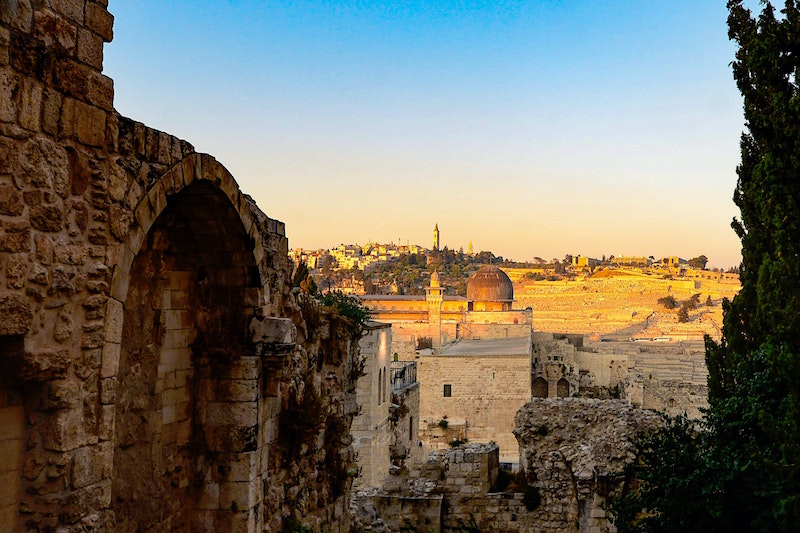
Sunrise in Jerusalem. Image by David Holifield via Unsplash.
Judaism –
Within the Old City, you’ll find the Temple Mount, the Holiest site in the Jewish faith, and the place Jews are required to face in prayer. The Mount was the location of the ‘First Temple’, built by King Solomon son of King David. The Foundation Stone of the temple is believed by Jews to be the exact location from which the World was created. Following the destruction of the First Temple, the Second Temple was constructed by Herod the Great, encasing the Temple Mount. Today, the Western Wall is the only remaining retaining wall of the second temple. Jewish law prohibits walking on the Temple Mount itself so as not to disrespect God, who they believed himself dwelled there. The Western Wall therefore, is the holiest place on Earth that Jews are permitted to pray. It’s here that the iconic images of orthodox Jews rocking in prayer and slipping written notes into the cracks of the wall are a daily occurrence. For some, the Limestone wall is better known as the ‘wailing wall’. This was culturally popularised as Jews could often be seen weeping in commemoration of their two fallen temples. Today, visitors can walk through the underground tunnels of the Western Wall, revealing stone arches, water pits and an ancient water aqueduct.
Temple Mount is not simply a resonance of the past, it is also a cornerstone of Jewish prophecy. It is believed it is here that the coming Jewish Messiah will construct the third and final Jewish Temple.
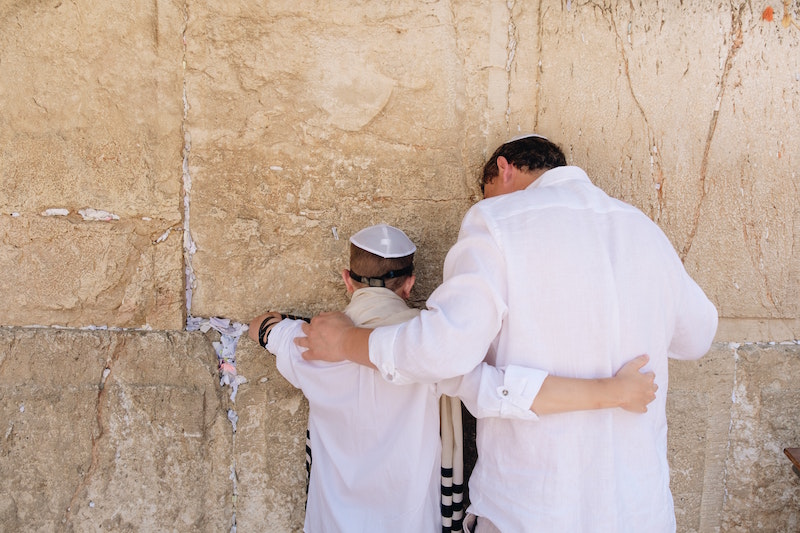
Pilgrimage. Image by Anton Mislawsky via Unsplash.
Islam –
Comparatively, the Temple Mount is the third most Holy site in the Islamic faith, following the Saudi cities of Mecca and Medina. For a short period of time in the early stages of Islam, Muhammad instructed his followers to pray toward the Al-Aqsa Mosque on the Mount. The foundation stone was also the place from which Muhammad is said to have ascended into Heaven. Today, the Dome of the Rock Mosque, with its sparkling gold-plated roof, is perhaps the most recognisable landmark in the city.
Christianity –
Hundreds of years ago, tens of thousands of bloodthirsty European Knights answered Pope Urbans plea to ‘liberate’ the Holy Land. While Christian interest in Jerusalem has waned somewhat since the Crusades, Jerusalem is still a place of enormous significance for many Christians.
Found within the Christian quarter, is the Church of the Holy Sepulchre. Many believe that the church is built upon the place of Christ’s crucifixion and contains the tomb, from which, he was resurrected. The administration and ownership of the church is divided between the churches of: Greek Orthodox, Armenian Orthodox and Roman Catholic, and to a lesser degree the Egyptian Copts, Syrians and Ethiopians.
The ‘Via Dolorosa’ allows visitors to walk the very same route that Jesus is said to have walked, carrying the cross in his crown of thorns. The winding route begins at the Antonia Fortress, and is marked by 14 stations of the cross, finishing in the Church of the Holy Sepulchre.
For Protestants, the ‘Garden tomb’ is an alternate site where Christ’s death and resurrection might have taken place. This peaceful location is less ornate and superstitious, and overlooks a bus stop. Outside the walls of the Old City, it feels detached yet more accessible and equally as powerful.
As well as the Christian Quarter and the Garden Tomb, the Mount of Olives provides breathtaking views over the city. What’s more, it features regularly in the Bible, which teaches us that Jesus: Taught, wept, sang and prayed upon the mount. It was also where he spent time on the night of his betrayal. At the foot of the mount of olives lies the Garden of Gethsemane.
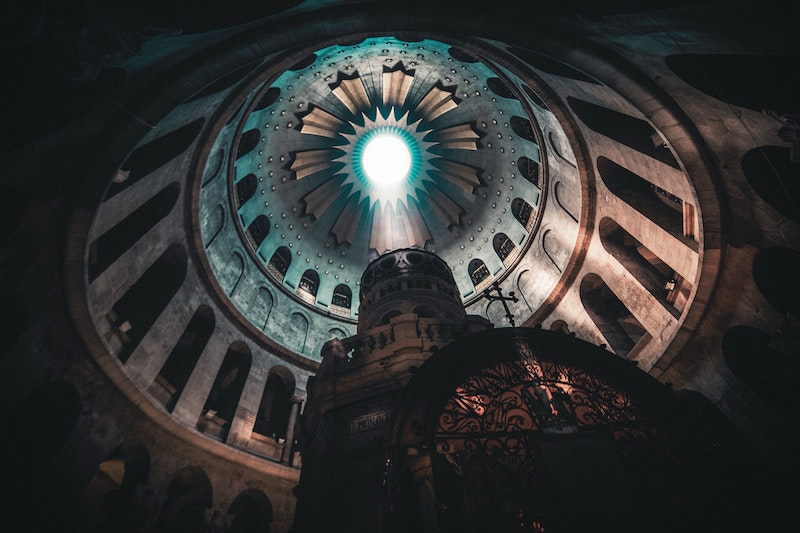
Church of the Holy Sepulchre. Image by David Rodrigo via Unsplash.
Nightlife/Food/Climate
Of course, Jerusalem’s main attraction is its astonishing history and religious significance. Nonetheless, the city also has some bonus strengths. Around almost evert turn, you’ll find exquisite local produce and tantalising street food, offering an authentic taste of the Middle East. The Israeli climate also offers the best of Mediterranean weather, with hot summers and warm, dry winters.
When it comes to nightlife, the city has a surprising amount to offer. The secret night hub found in the Mahane Yehuda Market feels both welcoming and forbidden. In the daytime, it’s a bustling middle eastern market selling all kinds of foods and spices. However, when the sun and the shutters go down, the bars and restaurant’s pop up. The area is especially worth a visit on Thursday night, the beginning of the Jewish weekend. The market nightlife isn’t a hit with all however. It has become a point of tension between the secular and religious communities, with the ultra-orthodox population expressing increasing frustration.
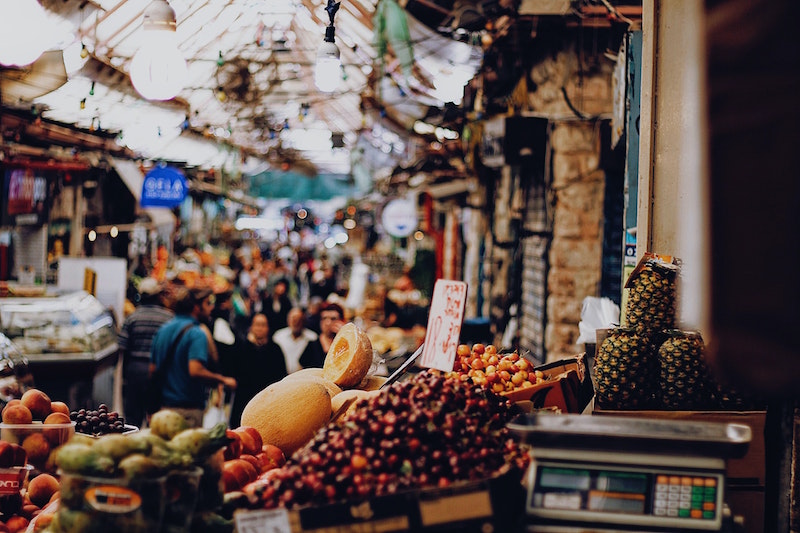
Jerusalem Market. Image by Roxanne Desgagnes via Unsplash.
Wider Israel/Palestine –
While a trip to Jerusalem alone would be sufficient wonder, it is a stone’s throw away from other fascinating locations.
Palestinian West Bank –
The Palestinian West Bank is a must-see for all visitors. It’s cities of Nablus, Ramallah and Jericho are some of the oldest settlements on the Planet. The hustle and bustle of these Islamic towns creates a vibrant and intense atmosphere. Here, Islam is truly a way of life. Its many green-domed mosques, bellowing out the call to prayer are a glimpse into a fascinating Middle-Eastern culture, entirely different from our own. Then, there’s Bethlehem, the birthplace of Jesus and a special place particularly around Christmas time.
Safety does need to be considered before travelling to the West Bank. The Australian government advises tourists to: ‘reconsider your need for travel’. Nonetheless, guided tours from Israel have a fantastic record of safety and employ local Palestinian guides. The inflammatory Jewish Settlement in the heart of Hebron does create tension, and is a city best avoided unless you’re feeling brave. If you are, Abraham offers an intriguing ‘dual narrative tour,’ allowing you to meet both Jewish settlers and Palestinian locals.
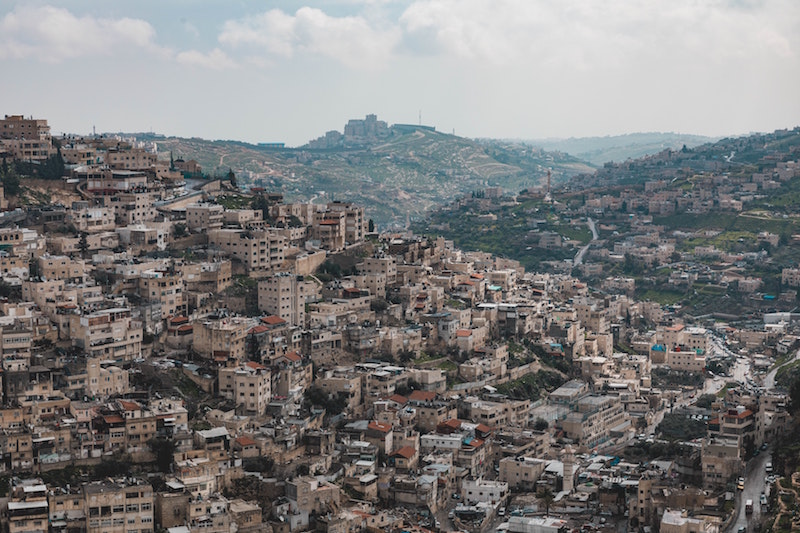
Jerusalem. Image by David Herring via Unsplash.
Israel –
In Israel, Acre, known locally as ‘Akko’, is a walled Crusader City with its castle walls still in-tact. Moreover, Tel Aviv is only an hour on the bus from Jerusalem. Despite this, it feels enormously different, and could easily be a modern Mediterranean city in Southern Europe. Tel Aviv’s shopping experience and nightlife are world renowned.
The river Jordan spirals through the nation and features in both Judaism and Christianity. The place at which the Israelites crossed into the Promised Land, and the place where Jesus was baptised by John the Baptist.
Finally, while Jesus walked on water, you can float. The Dead Sea is the lowest place on Earth, sitting 430.5 meters below sea level. It’s incredible levels of saltiness (34.2%) allows the body to remain suspended. It is also one of the World’s first Health Resorts and the mud found on its shores make a great face mask!
Overall, Jerusalem is the most important city in the history of humanity. For many religious believers, it is the closest place to Heaven on Earth. Even those who aren’t religious will find a pilgrimage to the ‘Holy Land’ truly captivating.

